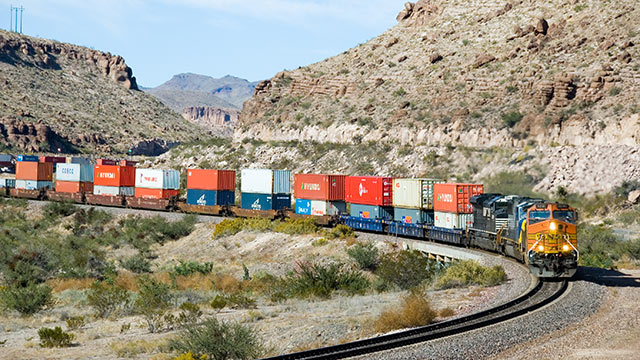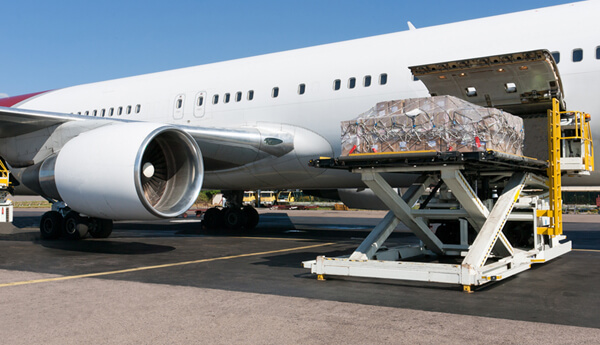- By Della tj
- October 17, 2025
- Rail Freight, Shipping
Moving goods across continents demands a dependable logistics solution. Choosing reliable rail freight from China to Italy allows businesses to achieve faster transit times than sea freight while maintaining lower costs compared to air shipping. Moreover, this transport method ensures consistent schedules, secure handling, and improved sustainability.
Why Choose Reliable Rail Freight from China to Italy?
Businesses prefer rail freight for its balance between speed, cost, and reliability. Although air freight is faster, it’s significantly more expensive, while sea freight can be slow and prone to port congestion.
Key Advantages
- Cost efficiency: Rail freight is up to 50% cheaper than air transport.
- Speed: Average transit time is 14–18 days compared to 35–40 days by sea.
- Sustainability: Trains emit 70% less CO₂ than air cargo.
- Reliability: Fixed rail timetables ensure consistent delivery schedules.
| Mode | Average Cost (USD/CBM) | Transit Time | Reliability | CO₂ Emissions |
|---|---|---|---|---|
| Air Freight | $8–$12 | 5–7 days | High | Very High |
| Sea Freight | $2–$4 | 35–40 days | Medium | Moderate |
| Rail Freight | $4–$6 | 14–18 days | Very High | Low |
In addition, rail freight serves as a crucial part of the China–Europe Railway Express, linking major industrial cities in China with logistics hubs in Italy like Milan and Verona.
What Are the Main Rail Routes from China to Italy?
Several efficient routes operate between major Chinese cities and Italian terminals. Each line integrates with the Belt and Road Initiative, ensuring reliable logistics connectivity.
| Route | Departure City (China) | Destination (Italy) | Transit Time | Frequency |
|---|---|---|---|---|
| Chongqing → Milan | Chongqing | Milan | 16 days | 3 trains/week |
| Xi’an → Verona | Xi’an | Verona | 17 days | 4 trains/week |
| Chengdu → Bologna | Chengdu | Bologna | 15 days | 2 trains/week |
Example: A shipment from Xi’an to Verona typically covers over 10,800 km, passing through Kazakhstan, Russia, Belarus, Poland, and Austria before entering Italy.
Additionally, these routes connect seamlessly to other European destinations via intermodal trucking.
How Much Does Rail Freight from China to Italy Cost?
Costs vary depending on cargo type, container size, and route. However, reliable freight forwarders provide transparent pricing models.
| Container Type | Average Cost | Weight Limit | Typical Use |
|---|---|---|---|
| 20ft Standard | $3,200–$3,800 | 22 tons | General goods |
| 40ft Standard | $5,200–$5,900 | 28 tons | Bulk shipments |
| 40ft High Cube | $5,500–$6,100 | 28 tons | Oversized cargo |
Additional Charges Include:
- Customs clearance: $50–$100
- Terminal handling fees: $150–$250
- Insurance: 0.3–0.5% of cargo value
To illustrate, a 40ft container from Chengdu to Milan containing 26 tons of electronics costs approximately $5,700, arriving within 15 days.
What Documents Are Required for Rail Freight from China to Italy?
Ensuring the right paperwork is vital to avoid customs delays. The following table lists standard documentation:
| Document | Purpose |
|---|---|
| Commercial Invoice | Declares cargo value for customs |
| Packing List | Lists item details and weights |
| Bill of Lading / Rail Waybill | Confirms transport contract |
| Certificate of Origin | Validates product source |
| Customs Declaration Form | Required for both export and import |
| Insurance Certificate | Covers shipment risk |
Moreover, professional freight forwarders often assist with EORI registration and customs brokerage, ensuring compliance with EU import laws.
Case Studies: Real Rail Freight from China to Italy
Case 1: Electronics Shipment – Chengdu to Milan
Cargo: 26 tons of consumer electronics
Container: 40ft HQ
Mode: Full Container Load (FCL)
Transit Time: 15 days
Total Cost: $5,700
Result: Goods reached Milan ahead of schedule with full customs clearance.
Case 2: Furniture Delivery – Xi’an to Verona
Cargo: 18 tons of assembled furniture
Container: 20ft Standard
Mode: LCL Consolidation
Transit Time: 17 days
Cost: $2,800
Result: Shipment delivered on time and integrated into an Italian warehouse network.
How Does Rail Freight Compare with Other Transport Modes?
| Feature | Rail Freight | Sea Freight | Air Freight |
|---|---|---|---|
| Speed | 14–18 days | 35–40 days | 5–7 days |
| Cost | Moderate | Low | Very High |
| Reliability | High | Medium | High |
| Environmental Impact | Low | Moderate | Very High |
| Best For | Medium-value, time-sensitive goods | Non-urgent bulk goods | High-value, urgent items |
On the other hand, while sea freight remains dominant for very large shipments, rail freight offers the best mid-range solution for both cost and efficiency.
What Factors Affect Rail Freight Transit Time to Italy?
Several variables influence transit duration:
- Border Clearance: Customs at Kazakhstan–Russia and Poland–Italy crossings may cause short delays.
- Weather Conditions: Severe winter conditions in Russia or Belarus can slightly extend delivery time.
- Container Handling: Efficient intermodal transfers in hubs like Duisburg and Verona reduce delays.
- Cargo Type: Dangerous or oversized goods require additional inspection.
However, trusted operators maintain strict timetables, ensuring shipments stay on schedule despite external factors.
How to Choose a Reliable Rail Freight Forwarder?
Selecting a dependable logistics partner ensures cost savings and smooth operations.
Tips for Choosing:
- Verify membership with FIATA or WCA.
- Ask about end-to-end visibility through GPS tracking.
- Confirm experience handling EU customs and bonded warehousing.
- Check reviews and case studies from previous clients.
Trusted freight forwarders also provide insurance, packaging, and door-to-door delivery — ensuring peace of mind throughout the process.
Conclusion
To summarize, choosing reliable rail freight from China to Italy delivers exceptional value — offering faster transit than sea freight and lower costs than air freight. It ensures consistent delivery schedules, lower carbon emissions, and dependable logistics performance.
Without a doubt, companies aiming to optimize their supply chains should invest in rail transport between China and Italy for a sustainable and cost-efficient future.
Request a Quote
Need a tailored solution for your shipping from China?Let TJ China Freight Forwarder assist you with reliable, cost-effective service.
FAQ:
Q1.What is the average delivery time for rail freight from China to Italy?
Typical transit time ranges from 14 to 18 days, depending on departure city and route efficiency.
Q2.Can I ship small quantities using rail freight from China to Italy?
Yes, LCL rail freight services allow consolidation of smaller shipments into shared containers for cost efficiency.
Q3.Are there temperature-controlled options for sensitive goods?
Indeed, refrigerated containers can maintain optimal conditions for perishable or pharmaceutical cargo throughout transit.
Q4.How do I calculate customs duties for Italy imports?
Duties depend on the HS code, declared value, and origin. Freight forwarders help compute accurate import taxes.
Q5.Is insurance included in rail freight service?
Insurance is optional but strongly advised to cover damage or loss risks during the international rail journey.




